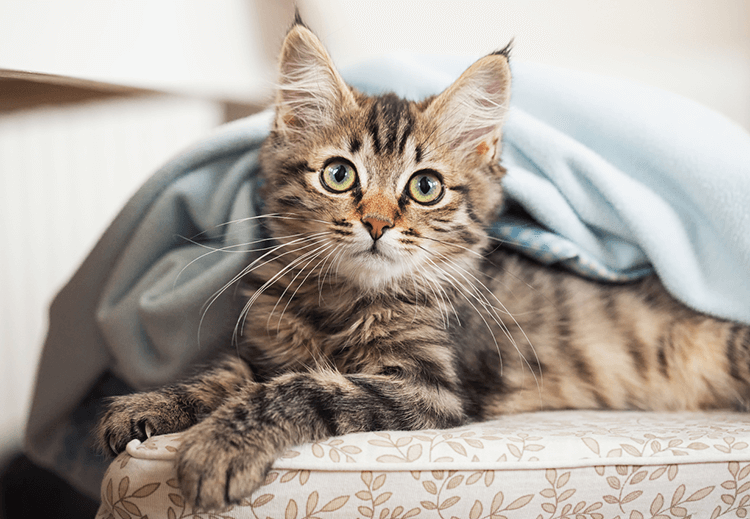Though both of my cats were adopted in 2006, they don’t (fingers crossed) appear to be slowing down anytime soon. Still feisty, they run around the apartment and fight over the warmth of the fireplace daily. Even though they’re pushing thirteen in human years, I sometimes wonder how they’re aging in cat years. Through a bit of research, I discovered that, just like us humans, a cat’s circumstances make a big difference in how they age.
CAT VERSUS HUMAN YEARS
It’s commonly known that each human year equals about 7 years in a cat’s life. However, after a bit of research, most veterinarians conclude that 1 human year in a cat’s life actually equals fifteen years in a human life. That means, at the ripe old age of one, your surly mowser might be exhibiting that rebellious teenage behavior every parent dreads. Too soon, you say! Well, give it a year, and your furry family member matures into young adulthood. Yep! A two-year-old cat has the equivalent of a twenty-four-year-old human. Time to move out or pay some rent, you say! Regardless of this factor, know that each cat ages differently, depending on genetic and environmental factors.
ENVIRONMENT MATTERS
Just like their humanoid counterparts, if a cat is given a comfortable place to sleep, food to eat, and time to play and release stress, they live longer. While most cats age at the same rate up to age two, certain research points out that an indoor cat ages 4 years to every one human year, outdoor cats age 8 years to every 1 human year. Now there’s something to be said for keeping kitty indoors! The ASPCA estimates that the average life span of an indoor cat can range from 13 – 20 human years of age, while an outdoor cat averages two to three years shorter than their indoor counterparts.
Additionally, just like humans, diet and exercise play a big factor in the life span of your beloved bubs. Be sure to feed them a healthy diet of grain-free organic food. Check all food ingredients to ensure that they include the names of things you know: beef versus beef meal, chicken versus chicken meal. Anything with ‘meal’ after it means that your baby is being fed byproducts or substitutes for the indicated meat or poultry.
MEDICAL TIMELINES TO WATCH
It’s smart to have an idea of what your kitty is going through physically and at what age. Veterinarians always start by checking your kitty’s teeth. A full set of adult teeth will indicate that a cat is at least 6 months old. If those teeth are clean and sharp, they are likely under the age of 2. After that age, a vet will usually check a cat’s coat and muscular system. Cats under the age of 10 tend to have shinier coats and more muscle definition around their backs. After age 10 to 14, muscle definition is reduced, and cats tend to have less musculature around their spines and shoulder blades. In addition, older cats may have saggy skin around the belly area.
Just as we age, it’s good to be aware of what your beloved furry baby is going through. Overall, be sure to provide them with a safe and warm place to sleep, healthy food, clean water, and love. They will return the favor with lots of cuddles (on their timeline), 6 am weekend head butts, and some pretty adorable companionship.






